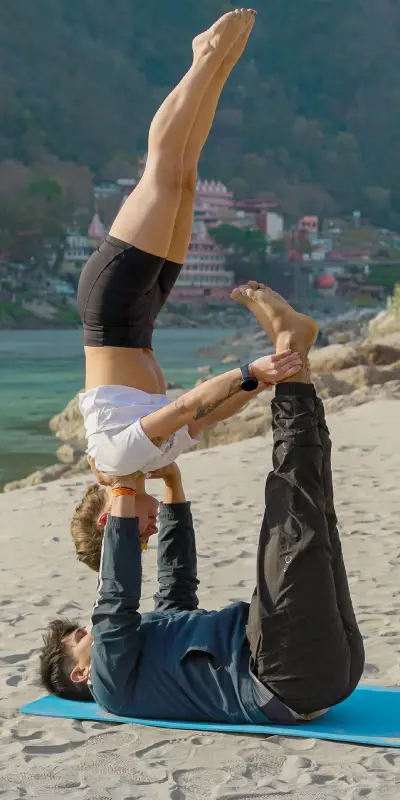
Get A Free Quote
New moms, take a deep breath and hear us out. Congratulations! You've brought new life into this world. Now that your little one is here, you're taking care of them around the clock. But are you taking care of yourself too?
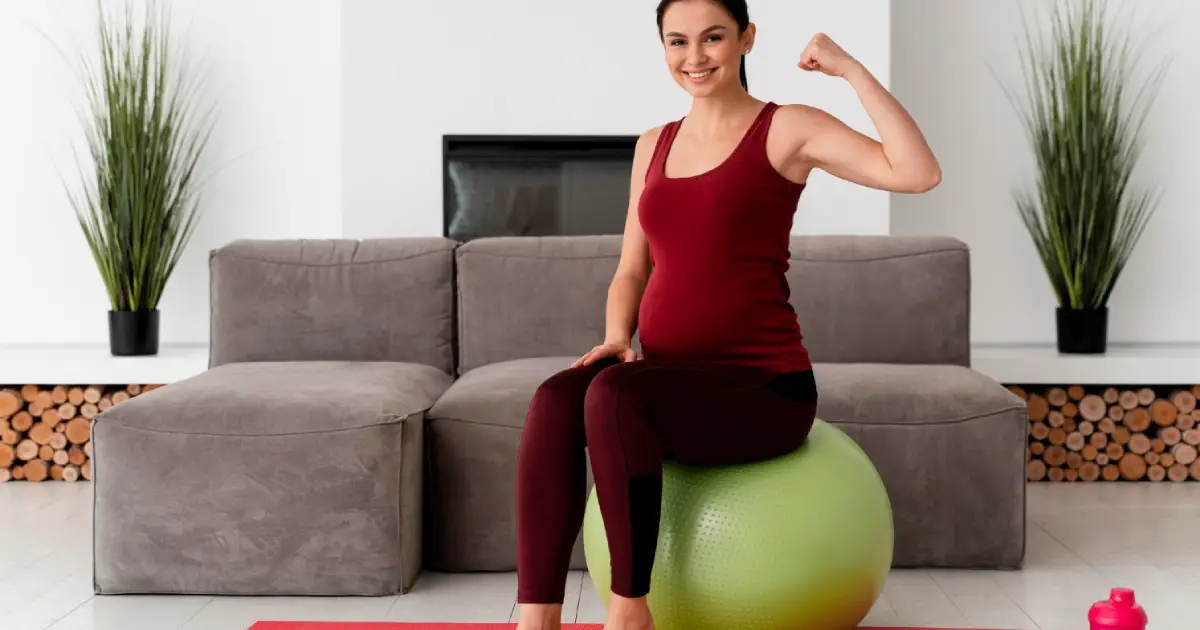
Postnatal yoga can be an amazing way to do just that!
It can help with:
Yoga post-pregnancy, often referred to as postnatal yoga, is a specialized form of yoga designed to support mothers in their postpartum journey. This practice integrates gentle yoga poses, breathing exercises, and relaxation techniques to aid in the physical and mental recovery of new mothers after childbirth. The postnatal phase is a crucial time for both physical and mental healing, and embracing yoga during this period can significantly contribute to the overall well-being of the new mother. This guide aims to illuminate the benefits and techniques of postnatal yoga, providing a pathway for new mothers like you to recover efficiently and regain their physical and mental balance.
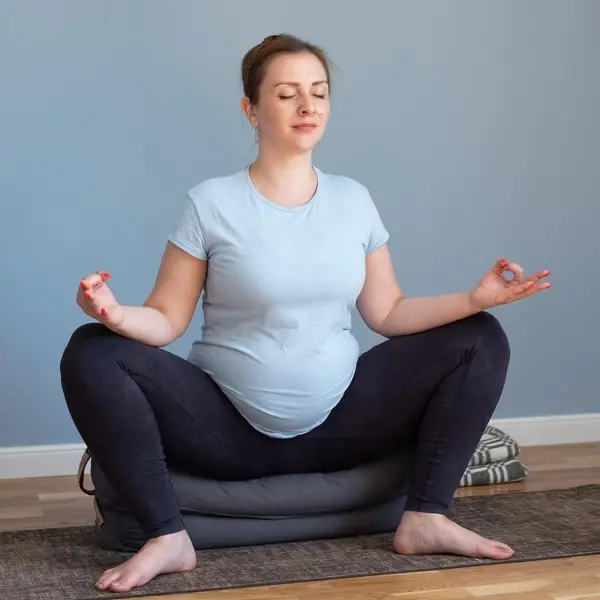
Malasana, or Garland Pose, is a deep squat with your feet close together and your hands in a prayer position at your chest.
Benefits: This pose helps open the hips, stretches the lower back, and strengthens the pelvic floor muscles. It can also relieve back pain and aid in labor preparation.
Precautions: If you have knee issues or find it challenging to balance, use a cushion or yoga block under your heels for support.
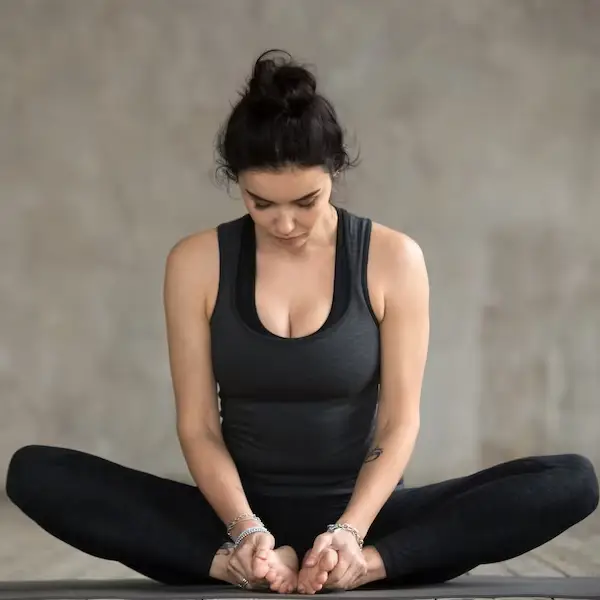
Baddha Konasana, or Bound Angle Pose, involves sitting with the soles of your feet together and your knees dropping to the sides.
Benefits: This pose stretches the inner thighs, groin, and hip muscles. It helps relieve discomfort associated with tight hips and can prepare the pelvis for childbirth.
Precautions: If you experience any discomfort or strain in your knees or hips, use cushions or props under your knees for support.
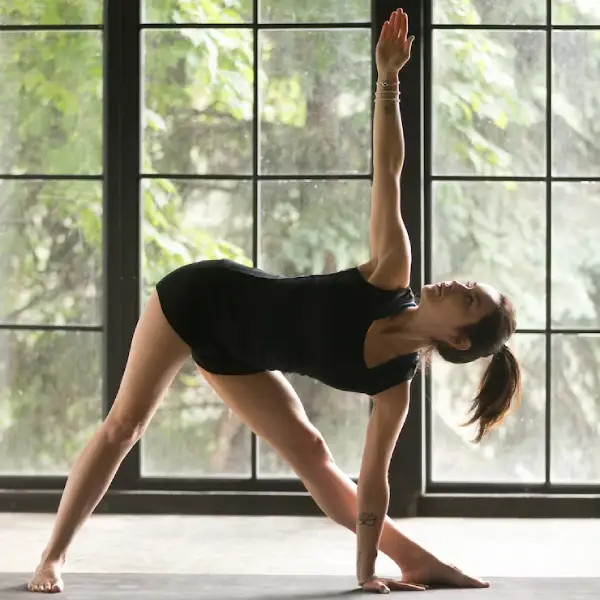
Trikonasana, or Triangle Pose, involves standing with your feet wide apart and reaching one hand down to the floor while extending the other arm upward
Benefits: This pose stretches the sides of the body, improves balance, and strengthens the legs. It can alleviate backaches and promote better posture.
Precautions: Be cautious with your balance, especially in the later stages of pregnancy. You can use a yoga block under your hand for support if needed.
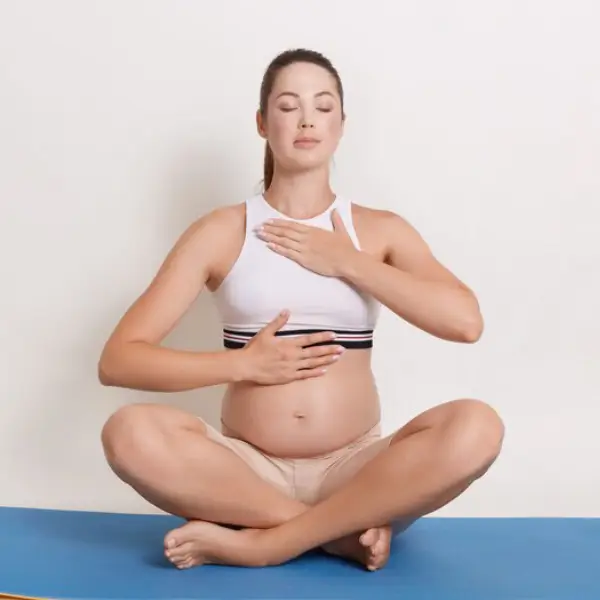
Dirgha Pranayama, or Three-Part Breath, involves deep breathing into the three parts of your abdomen: lower, middle, and upper.
Benefits: This practice promotes relaxation, relieves stress, and increases oxygen intake for both you and your baby.
Precautions: Be cautious with your balance, especially in the later stages of pregnancy. You can use a yoga block under your hand for support if needed.

Bhramari Pranayama, or Bee Breath, involves inhaling deeply and exhaling while making a humming sound like a bee.
Benefits: This practice helps reduce anxiety, calm the mind, and relieve stress. It can also improve focus and concentration. You can learn more about the benefits here
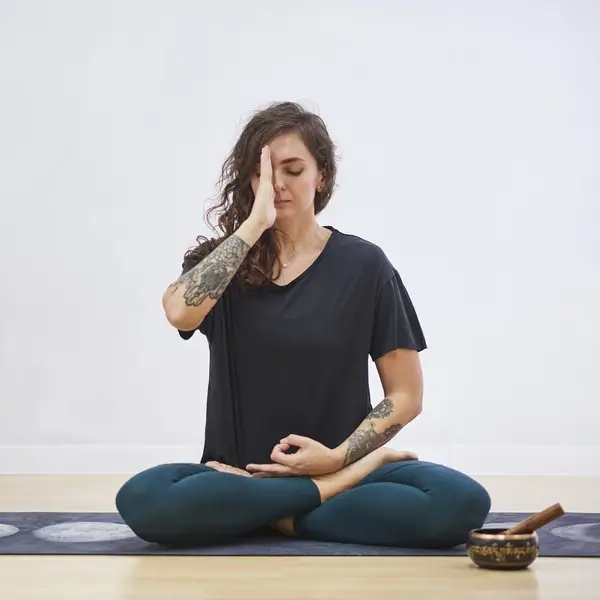
Sheetali Pranayama, or The Cooling Breath, is a breath practice that involves inhaling through a rolled tongue (or pursed lips) to create a cooling sensation.
Benefits: This practice helps reduce body heat, calm the mind, and alleviate stress or hot flashes commonly experienced during pregnancy.

Uttana Shishosana, also known as the Extended Puppy Pose, is a gentle forward bend that stretches the spine and shoulders. It resembles a puppy stretching forward.
Benefits: This pose helps relieve tension in the upper body, improves flexibility, and calms the mind. It's particularly useful for easing postpartum shoulder and neck tension.
Precautions: Avoid this pose if you have any discomfort or pain in the wrists or shoulders. Make sure you maintain a gentle stretch without straining.
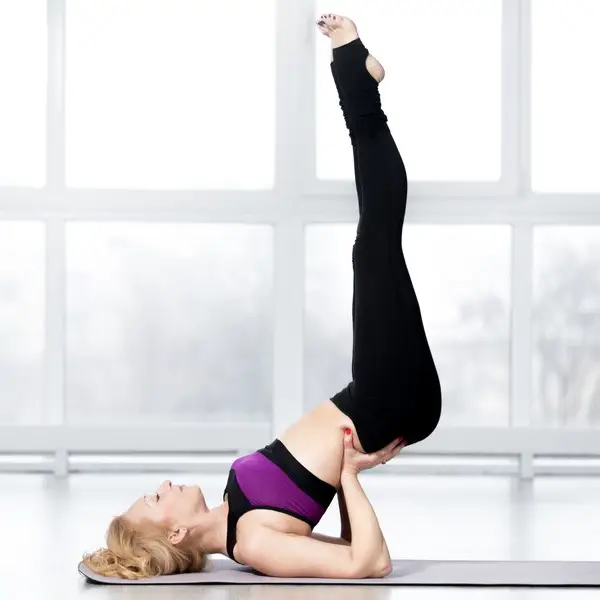
Viparita Karani, or Legs Up the Wall pose, involves lying on your back with your legs resting vertically against a wall.
Benefits: This restorative pose helps reduce swelling in the legs, relaxes the lower back, and promotes relaxation. It can alleviate fatigue and stress.
Precautions: If you have any complications or pain in your lower back or legs, consult your healthcare provider before attempting this pose.
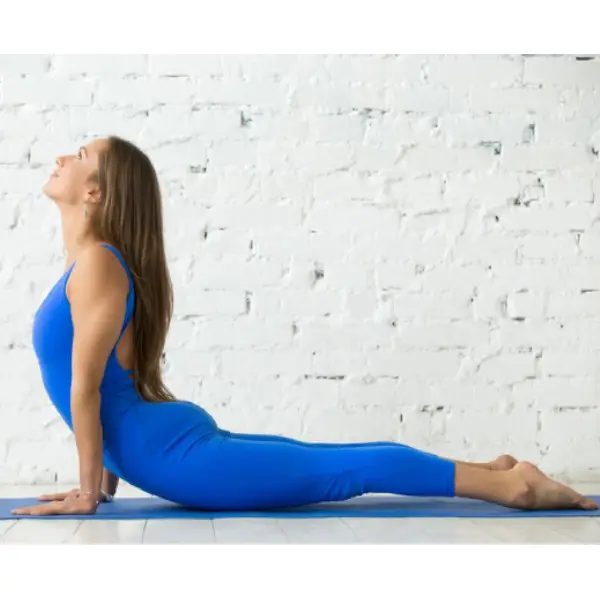
Bhujangasana, or Cobra Pose, is a gentle backbend that involves lifting the chest while keeping the lower body grounded.
Benefits: This pose strengthens the back and abdomen muscles, improves posture, and alleviates back pain. It also helps with digestion.
Precautions: If you've had a cesarean section or experienced discomfort while performing this pose, avoid it or consult your healthcare provider.

Anulom Vilom is a yogic breathing technique where you alternate between breathing through your nostrils, one at a time.
Benefits: This practice calms the mind, reduces stress, and enhances lung capacity, aiding in relaxation and postpartum recovery.
You can read more about it here
https://rishikeshyognirvana.com/blog/what-is-anulom-vilom-pranayama.php
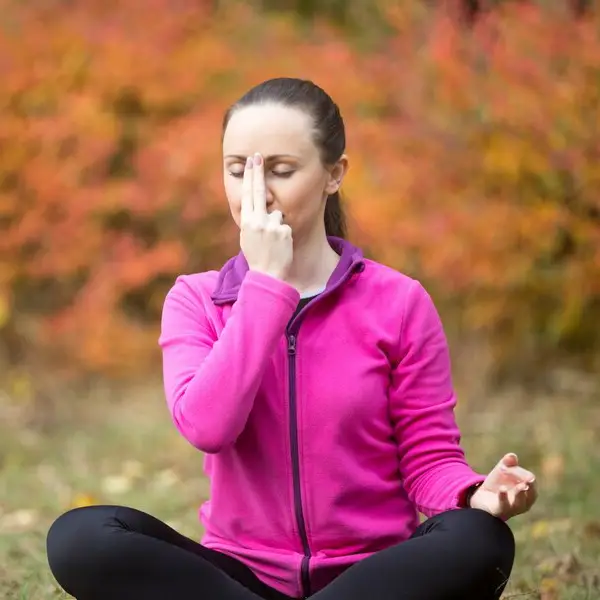
Nadi Shodhana Pranayama, another form of alternate nostril breathing, helps balance the body's energy channels.
Benefits: It promotes mental clarity, reduces anxiety, and enhances lung function. It's particularly useful for emotional well-being post-pregnancy.
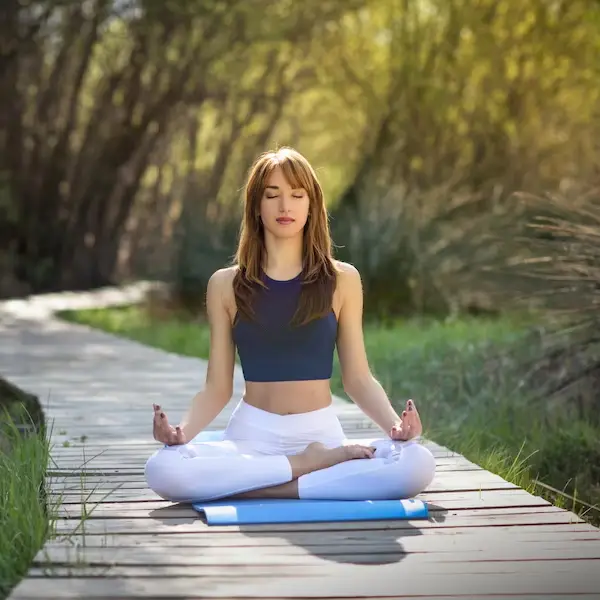
Kapalabhati Pranayama involves forceful exhalations through the nose, followed by passive inhalations.
Benefits: This practice boosts energy, clears the mind, and strengthens abdominal muscles. It aids in postpartum recovery by increasing oxygen intake.
Rishikesh, often referred to as the "Yoga Capital of the World," offers a unique spiritual environment conducive to deepening your yoga practice. The serene surroundings on the banks of the Ganges River and the presence of numerous ashrams and temples make it an ideal place for spiritual contemplation. Rishikesh is renowned for its high-quality yoga teacher training programs. Instructors in Rishikesh are often highly experienced and steeped in the traditional teachings of yoga. Many programs are approved by well-known yoga organizations.
Ensure that the program you choose is accredited by a recognized yoga authority. This guarantees that you'll receive comprehensive and standardized training.
Consider the course duration that best fits your schedule and commitment level. Programs can range from a few weeks to several months, so choose one that aligns with your goals.
Research the program thoroughly by reading reviews and testimonials from past participants. This provides valuable insights into the quality of training and the experience you can expect.
Consider your budget when selecting a program. Some programs may include meals and accommodations, while others may not. Choose an option that suits your financial resources and comfort preferences.
Consider the course duration that best fits your schedule and commitment level. Programs can range from a few weeks to several months, so choose one that aligns with your goals.
The benefits of postnatal yoga are multifaceted. Physically, it aids in strengthening the body, alleviating discomfort, and restoring flexibility. Mentally, it provides a sanctuary for stress reduction, improved sleep, and emotional balance. Moreover, it prepares new mothers for the mental challenges that often accompany postpartum life, creating a sense of well-being and resilience.
However, it cannot be emphasized enough that safety is paramount. New mothers should always consult with their healthcare provider before commencing any yoga practice, ensuring that it aligns with their unique needs and circumstances.

Posted: 29 September, 2023
Renowned for his expertise in yoga and its philosophy, Sajan Negi brings over 15 years of experience in guiding individuals on their transformative journey towards holistic well-being. With a Master’s degree in Yoga and a life dedicated to personal growth, Sajan Negi combines ancient wisdom with modern insights to inspire physical strength, mental clarity, and spiritual peace in his students.